Chiropractic Adjustment in Germany
Search and Compare the Best Clinics and Doctors at the Lowest Prices for Chiropractic Adjustment in Germany

Find the best clinics for Chiropractic Adjustment in Germany
No pricing info available
Singapore offers the best prices Worldwide
Price: $ 44
From 4 verified reviews
Veronica Gonzalez, 16 May 2019
I have gone for the past few months to BackStrong and the treatment has been amazing. I have suffered from headaches for many years, and since I have been in treatment with Frau Morales my headaches are gone. Also, my posture has improved a lot. I am very grateful for the help.
From 2 verified reviews
jaydip pandiya, 03 June 2019
hllo i am dr krutika(physiotherapist) from india . i need a job in Germany to settle down there. is there any vacancy for me? i have 3 yr experience in shalby multi speciality hospital.
From 10 verified reviews
Gesa Groß, 29 August 2020
Mr. Dohrmann always takes enough time and has already been able to help my two children. Here you really feel in good hands!
- Home
- Germany
Compare Before & After Photos of _procedure_photos.phpChiropractic Adjustment
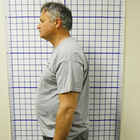
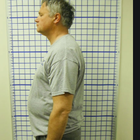
Full-side view
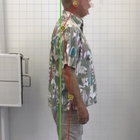
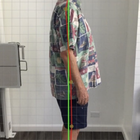
Full-side view
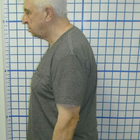
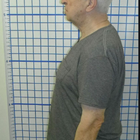
Full-side view


Full-side view
WHY US?
At Medijump, we're making medical easy. You can search, compare, discuss, and book your medical all in one place. We open the door to the best medical providers worldwide, saving you time and energy along the way, and it's all for FREE, no hidden fees, and no price markups guaranteed. So what are you waiting for?

Free

Best Price

Widest Selection

Risk-Free
What you need to know about Chiropractic Adjustment in Germany

A chiropractic adjustment, also known as spinal manipulation, is a procedure that is performed to improve spinal motion and enhance the body’s physical function by bringing the bones of a joint back to their normal, natural position. The procedure is performed by trained specialists (chiropractors) who use their hands or a small instrument to apply a controlled, sudden directional thrust into a spinal joint. Besides chiropractors, physical therapists and osteopathic physicians may be trained and licensed to perform chiropractic adjustment as well.
Some of the most common conditions for chiropractic adjustment are low back pain, neck pain, and headache.
What is the cost of Chiropractic Adjustment in Germany?
Several variables, including the intricacy of the patient's illness, the chiropractor's experience, and the location of the clinic, can have a considerable impact on the price of the Chiropractic Adjustment in Germany. Budgeting for this treatment must take these things into account. Despite the cost, keep in mind that this is a safe, all-natural therapy option that could spare you from needing to undergo costly procedures or take prescription medication for an extended period of time.
What does a Chiropractic Adjustment Procedure Involve?
During a chiropractic adjustment, you will lie down on a specifically designed chiropractic table so the chiropractor can administer treatment. Your position on the table can vary depending on your problem or diagnosis. Most often, the chiropractor will ask you to lie face down. The chiropractor will use their hands to apply a controlled, directional force to a joint. This movement is designed to push the joint beyond its usual range of motion. You may hear cracking or popping sounds as your joints are moved by the chiropractor during a treatment session.
How Long Should I Stay in Germany for a Chiropractic Adjustment Procedure?
A typical Chiropractic Adjustment session takes around 30 minutes to an hour, depending on the complexity of the condition being treated. Since the procedure is non-invasive and has a minimal recovery period, you can leave the clinic immediately after the session. A chiropractic adjustment may require a series of visits, usually around 6 to 10 visits until you attain maximum improvement. You can travel to Germany multiple times for each visit, or you can stay in the area until you complete all treatment sessions.
What's the Recovery Time for Chiropractic Adjustment Procedures in Germany?
The recovery time varies for one person to another. In general, it is recommended that you rest for at least a day or two after each session of chiropractic adjustment, especially if you experience minor side effects, such as fatigue, headache, or pain in the parts of the body that were treated. You may also need to avoid strenuous activity until your condition is fully healed. Your chiropractor will give you a detailed recovery timeline.
What sort of Aftercare is Required for Chiropractic Adjustment Procedures in Germany?
While receiving a Chiropractic Adjustment doesn't necessitate a specific aftercare routine, following certain guidelines can amplify its benefits and support overall. Your chiropractor will give you specific aftercare instructions which may include:
-
Drink plenty of water. Keep drinking more than the normal amount for several days to keep your body properly functioning and healthy.
-
Keep moving. Avoid sitting for long periods of time and try going for a long walk or take a bike ride. If you need to go back to work, it is best that you utilize a standing desk.
-
Move carefully. While you need to stay active, you should not overdo it.
-
Do the exercises that your chiropractor gives you.
What's the Success Rate of Chiropractic Adjustment Procedures in Germany?
According to the National Center for Complementary and Integrative Health (NCCIH), chiropractic adjustment has been proven to provide relief for mild and moderate low back pain. The success rate of Chiropractic Adjustment is quite high, with studies showing approximately 80% of patients experience relief from their symptoms. Many patients in Germany have reported significant improvements in their health, mobility, and quality of life after receiving chiropractic adjustments. Keep in mind, however, that success rates can vary depending on the individual's health conditions and how they respond to the treatment.
Are there Alternatives to Chiropractic Adjustment Procedures in Germany?
Massage therapy, exercise, and physical therapy offer similar results to chiropractic adjustment. Other alternatives to chiropractic adjustment include painkillers, spinal fusion surgery, or nerve treatment.
It's important to remember that what works best vary from person to person, and sometimes a combination of treatments is most effective. Make sure to consult your doctor for the best treatment for your specific case. Your health should always be the top priority, and there's no one-size-fits-all solution to any condition.
What Should You Expect Before and After the Procedure
Before the Chiropractic Adjustment, your chiropractor will perform a comprehensive assessment to understand your health condition better. This includes a physical examination, medical history review, and possibly, imaging tests. Understanding your Health Conditions and issues in depth helps the chiropractor to customize a treatment plan that suits your needs.
After the procedure, it's common to feel some immediate relief. However, some patients might experience minor side effects, such as discomfort in the treated area, headaches, or fatigue. These symptoms usually go away within a few hours or days. Your condition will likely improve, the pain should disappear, and you will feel reenergized. Generally, a successful chiropractic adjustment will improve your quality of life
What are the Potential Risks of Chiropractic Adjustment?
Overall, the procedure is considered safe. Minor and temporary side effects (headache, sore joints, dizziness, fatigue) occur in 23% to 83% adult patients. Serious risks that can be debilitating are very rare, ranging from 1 per 2 million adjustments and 13 per 10,000 patients. These serious risks include:
-
Spinal cord injury
-
Spinal disk injury
-
Stroke
-
Cauda equina syndrome.
Can children and teens receive Chiropractic Adjustment?
Indeed, youngsters and adolescents can securely undergo Chiropractic Adjustment. Chiropractic care is experiencing heightened popularity as a precautionary healthcare approach amongst budding populations, serving as a boon to their developing bodies while fostering salubrious habits. This treatment can assist with posture-related concerns, sporting traumas, back and neck discomfort, and events extend to conditions like asthma and ear infections.
Is Chiropractic Adjustment safe for pregnant women?
Yes, it is widely recognized that expecting women can safely undergo chiropractic adjustments. Numerous pregnant women seek chiropractic care to address common discomforts like sciatica and backaches. It can expedite labor and childbirth duration, manage nausea symptoms, sustain a healthier pregnancy, and potentially prevent a caesarean delivery. Nonetheless, it's indispensable to always consult with your doctor prior to undergoing any medical treatments during pregnancy.
The techniques used by chiropractors while administering adjustments on pregnant patients are designed to avoid abdominal pressure. They also provide secure and beneficial prenatal exercises and stretches. To ensure the safest and most effective treatment, it's crucial to furnish your chiropractor with a precise and thorough medical history, inclusive of details pertaining to your pregnancy.
Whilst the information presented here has been accurately sourced and verified by a medical professional for its accuracy, it is still advised to consult with your doctor before pursuing a medical treatment at one of the listed medical providers
No Time?
Tell us what you're looking for and we'll reachout to the top clinics all at once
Enquire Now

Popular Procedures in Germany
Prices Start From $400

Prices Start From $21

Recommended Medical Centers in Germany for Chiropractic Adjustment

- Interpreter services
- Translation service
- Religious facilities
- Medical records transfer
- Medical travel insurance
- Health insurance coordination
- TV in the room
- Safe in the room
- Phone in the room
- Private rooms for patients available

- Interpreter services
- Translation service
- Religious facilities
- Medical records transfer
- Medical travel insurance
- Health insurance coordination
- TV in the room
- Safe in the room
- Phone in the room
- Private rooms for patients available

- Interpreter services
- Translation service
- Religious facilities
- Medical records transfer
- Medical travel insurance
- Health insurance coordination
- TV in the room
- Safe in the room
- Phone in the room
- Private rooms for patients available

- Interpreter services
- Translation service
- Religious facilities
- Medical records transfer
- Medical travel insurance
- Health insurance coordination
- TV in the room
- Safe in the room
- Phone in the room
- Private rooms for patients available

- Interpreter services
- Translation service
- Religious facilities
- Medical records transfer
- Medical travel insurance
- Health insurance coordination
- TV in the room
- Safe in the room
- Phone in the room
- Private rooms for patients available

- Interpreter services
- Translation service
- Religious facilities
- Medical records transfer
- Medical travel insurance
- Health insurance coordination
- TV in the room
- Safe in the room
- Phone in the room
- Private rooms for patients available

- Interpreter services
- Translation service
- Religious facilities
- Medical records transfer
- Medical travel insurance
- Health insurance coordination
- TV in the room
- Safe in the room
- Phone in the room
- Private rooms for patients available

- Interpreter services
- Translation service
- Religious facilities
- Medical records transfer
- Medical travel insurance
- Health insurance coordination
- TV in the room
- Safe in the room
- Phone in the room
- Private rooms for patients available

- Interpreter services
- Translation service
- Religious facilities
- Medical records transfer
- Medical travel insurance
- Health insurance coordination
- TV in the room
- Safe in the room
- Phone in the room
- Private rooms for patients available

- Interpreter services
- Translation service
- Religious facilities
- Medical records transfer
- Medical travel insurance
- Health insurance coordination
- TV in the room
- Safe in the room
- Phone in the room
- Private rooms for patients available
Chiropractic Adjustment in and around Germany
About Germany
Germany, a titan in Central Europe and a vital constituent of the European Union, enjoys the reputation of having the finest healthcare system across the continent. Medical tourists often choose Germany due to its unrivaled service quality over cost, with Chiropractic Adjustment procedures being the most in-demand.
Prices here exhibit a significant hike when compared to the neighboring countries of Poland and Hungary. Germany, despite housing just two JCI accredited facilities, places considerable trust in its local accreditation bodies.
This includes institutions such as the German Institute for Standardisation, the Telemedicine for the Mobile Society (TEMOS), and the Cooperation for Quality and Transparency in Healthcare (KTQ-GmBH). The language barrier is virtually non-existent as the majority of the doctors and medical staff exhibit proficiency in English. Beyond the capital city of Berlin, Munich, Hamburg, and Frankfurt are popular delectations among medical tourists.
Popular Parts of Germany
Home to an approximate 83 million inhabitants, Germany stands tall as the second most populated nation in Europe. The country presents a fascinating blend of deep-rooted history and cutting-edge technology. Visitors can pay their respects at numerous WWII memorials and museums, bask in the allure of the country's picturesque natural landscapes, or surrender to the tantalizing array of culinary delights that Germany has to offer. Truly, Germany embraces diverse interests, ensuring every traveller finds something to cherish.
- Berlin is Germany’s capital city. It is a vibrant city with diverse sights to see. Visit the glass dome of The Reichstag, take a walk through Brandenburg Gate, be inspired by Berlin Cathedral, or wander around a UNESCO World Heritage Site: Museumsinsel (Museum Island).
- Munich is home to a beautiful historic city center, futuristic drives, and outdoor fun. For a historical tour, tourists can travel to the Church of St. Peter, the city’s oldest parish church dating back six centuries. For a car lover, visit the BMW Museum to learn more about the history of BMW cars and motorcycles. For outdoor activity, tourists can surf at the Eisbach wave on the Isar river.
- Hamburg provides refreshing sea air. The city was labeled as “the gateway to the world” because it is a center of international trade. As the city revolves around water, tourists should stroll around the harbor, lay around beside the Elbe, or sail on the Outer Alster lake.
- Frankfurt am Main is the financial and business hotspot of Germany. Although it is packed with skyscrapers, the city still offers amazing architecture, a piece of history, and even a large green space in the city forest.
- Hanover calls itself as the “EXPO City” because it hosts several of the biggest exhibition in the world. The city also boasts an astonishing blend of modern and ancient. There are a number of museums and galleries, a large zoo, and innovative street art for tourists to explore.
Weather and Climate in Germany
The four distinct seasons make Germany a year-round destination for tourists. The summer starts in June and ends in August. The average temperature is 24 °C, sometimes even as high as 30 °C. People tend to enjoy outdoor activities during this season. This is also the most popular time to visit and peak travel season, so prices can be higher than usual.
Autumn graces Germany in the months of September and October. During this time, the weather is comfortably warm, closely mirroring that of summer. However, by mid-November, a notable drop in temperatures can be expected. This period is particularly popular among tourists owing to the much-celebrated Oktoberfest.
Winter in Germany, which runs from December through February, can be chilling with temperatures dropping to as low as -10°C. Yet, the festive vibrancy brought on by the Christmas season often offsets the cold. Visitors planning a trip during winter must ensure to pack ample warm clothing for a comfortable experience.
Spring in Germany marks the delightful bloom of cherry blossoms and typically spans from March through May. The transition into this season often ushers in a rapid rise in temperatures, making it a beautiful and warm period to visit.
Getting around in Germany
Frankfurt Airport is the largest airport in Germany. The airport serves domestic flights as well as international flights. It connects the country with almost every country in the world. The airport is the hub for Condor and Lufthansa. It also serves budget airlines such as Ryanair, Euro wings, Wizz Air. Düsseldorf International Airport and Munich Airport also receive their shares of international flights.
Train, bus, and taxi are the best options to get to the city center from Frankfurt Airport. A trip by train usually costs 4.65 EUR and takes around 40 minutes. Train tickets need to be punched, otherwise, you can get a 50 EUR fine. The bus costs 4.35 EUR and takes around 30 minutes. Buses that take tourists to the city center are No. 61, 77, 72, 58, 62, N81 and N7. Taxis are not very cheap, it will cost around 25 EUR and will take approximately 20 to 30 minutes to the city center.
As the creator of the first highway system, Germany has some of the best public transportation in the world. The public transportation is integrated with one ticket that gives tourists access to buses, trams, U-Bahn trains, and S-Bahn trains. A one-way fare starts from 2.90 EUR. It is better to get a one-day unlimited pass for 7 EUR or three days for 17 EUR.
Train travel is very efficient and affordable. Germany rail system has both high-speed trains and regular trains. High-speed trains are very fast but much more expensive. It’s advised to book train tickets in advance. Buses are the most cost-effective way to get around Germany although it is not as efficient as the train. Buses here are comfortable with air-conditioning and rest stops.
Taxis in Germany are expensive. All taxis are metered and start with a base fare of around 3.70 EUR. There is no Uber in the country, but tourists can use the MyTaxi App. If you want to get around the city, the best way is to rent a bicycle. Most cities are equipped with well-marked bicycle lanes.
Tourist Visas in Germany
Germany extends a cordial welcome to citizens from numerous nations, offering them visa-free entry. This privilege applies to travelers from Australia, New Zealand, Canada, Israel, Japan, Poland, the United States, and Switzerland, who are invited to stay for up to 90 days without the need for a visa.
Moreover, as a member of the European Union (EU), Germany adheres to the policy of open borders with its fellow EU nations. Consequently, EU citizens can freely travel to and enter Germany without any requirement for a visa. This ease of movement provides an added advantage for those wishing to visit Germany, whether for business, leisure, or medical purposes.
Citizens of other countries need a Schengen Visa. The application for a Schengen Visa must be filed with the embassy of the country of your primary destination. It is best to always check the requirements for Germany Visa Application before applying.
Additional Information
- Local Currency: the local currency is the euro (EUR). 1 USD converts to 0.94 EUR.
- Money & Payments: ATMs are easily available across the country. The easiest way to obtain cash is to use an ATM linked to international networks. Credit cards are not widely accepted in Germany, so always make sure to carry some cash. Some hotels, shops, and restaurants will accept credit cards. Tipping 1 EUR to room cleaners or porters is common. Most people add 5% or 10% tip in restaurants and bars. Tourists can tip about 10% to taxi drivers.
- Local Language: The official language is German. It is nice to know a little German to show respect. Many Germans in major cities and tourist areas will know a little English.
- Local Culture and Religion: 57% of Germany’s population follows Christianity, making it the largest religion in the country. Islam is the second largest religion. Buddhism, Judaism, Hinduism are also practiced.
- Public Holidays: Germany celebrates Christian religious holidays. The country hosts several festivals such as Maibaumaufstellung every 1st May and Oktoberfest in October.
Popular Searches
- Plastic Surgery in Thailand
- Dental Implants in Thailand
- Hair Transplant in Thailand
- Breast Augmentation Thailand
- Gastric Sleeve in Thailand
- Gender Reassignment Surgery in Thailand
- Laser Hair Removal in Bangkok
- Botox in Bangkok
- Dermatology in Bangkok
- Breast Augmentation in Bangkok
- Coolsculpting in Bangkok
- Veneers in Turkey
- Hair Transplant in Turkey
- Rhinoplasty in Turkey
- Stem Cell Therapy in Mexico
- Rhinoplasty in Mexico
- Liposuction in Mexico
- Coolsculpting in Tijuana
- Rhinoplasty in Korea
- Scar Removal in Korea
- Gastric Sleeve in Turkey
- Bone Marrow Transplant in India
- Invisalign in Malaysia
- Plastic Surgery in the Dominican Republic
- Tummy Tuck in the Dominican Republic
- Plastic and Cosmetic Surgery in Poland
- Rhinoplasty in Poland
- Hair Implant in Poland
- Dental Implants in Poland
- IVF in Turkey


